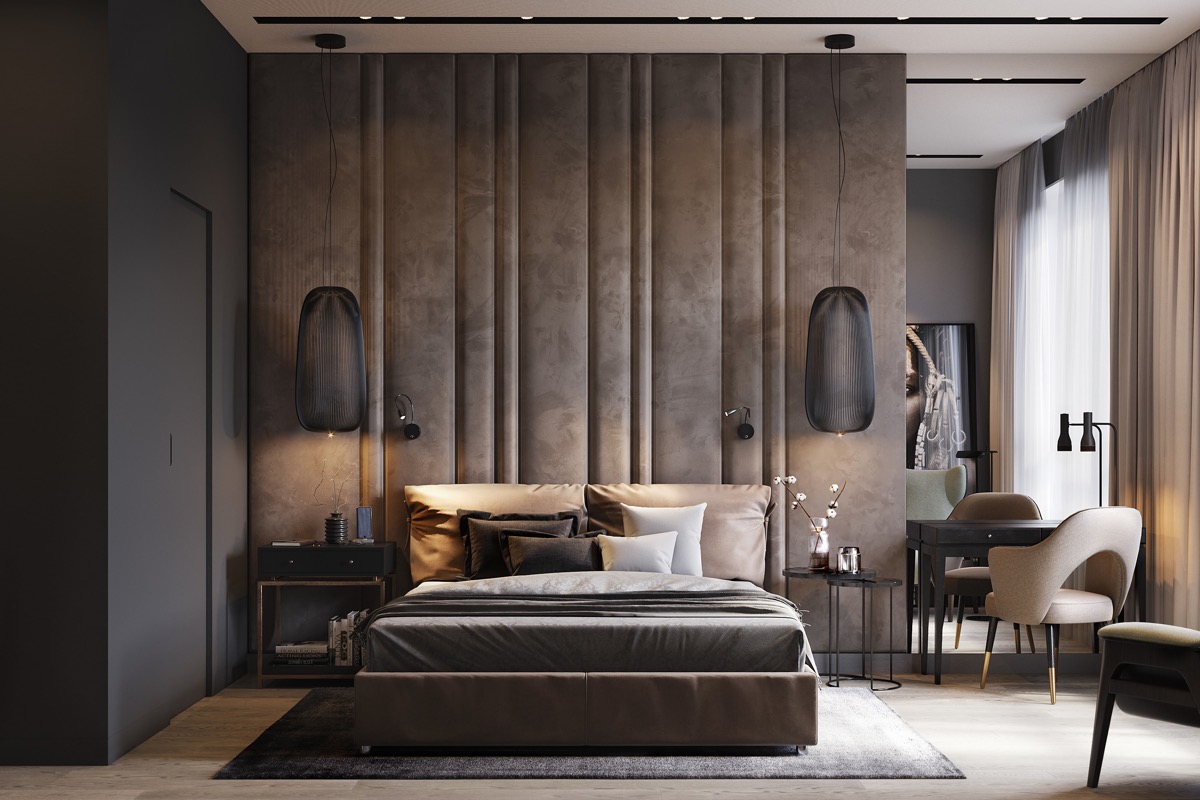3 Tips to Fashion an Integrated Master Bedroom Design

In the modern era of interior designs, one can be experimental with various colour-pallets, textures, wall decors when it comes to creating a master bedroom design. But, one of most important things that needs to be considered while decorating the master bedroom is its integration with the attached master bathroom. If they don’t complement each other, it could affect the overall aesthetics of the master bedroom.
While creating an integrated master bedroom design, you need not have a perfectly symmetrical interior design. There are innumerable ways for asymmetrical and contemporary modern experimentation which will not only make the master bedroom design stand apart but also make it look seamless and undeviating.
Here are three tips on how to integrate interior design techniques for a unified look of the master bedroom, one which complements the master bathroom:
Synchronising inverted colour schemes: If you are into vibrant and colourful interior designs, you may consider inverting the colour schemes of your master bedroom and master bathroom. If you choose a darker shade of wall colour for your master bedroom, you should choose a lighter shade for your master bathroom.
Another way of doing this is to alternate the shades of the carpets or floor tiles of the master bedroom and master bathroom.
Other elements like wall painting, headboards and other furniture can also be inverted. For example, if you have a brightly coloured painting on your bedroom wall, you can place plants with light green leaves in your bathroom shelves.
You can also use light-coloured furniture against a dark-coloured bedroom wall or have a black glass countertop against a light shade bathroom wall. Experiment with the mixing of colours but make sure you synchronise them appropriately so that each colour catches the eye!
Demarcate the zones but do not make rigid boundaries: The easiest way to create different zones for your master bedroom and master bathroom is to separate them with a door.
Now, you may choose an opaque wooden door or a sandblasted glass or granite door for the bathroom depending on the level of privacy that you need. But make sure that the colour of the ply or the design of the glass is in sync with your overall bedroom design. Like, if you have picturesque sceneries covering your bedroom wall, the bathroom door should not have a mickey-mouse design!
It is best to go with floral and plant motifs in the bathroom door if your bedroom design consists of pastel shades and scenic wall décor.
You can also experiment with textured and patterned bedroom walls and bathroom doors. For example, if you have horizontal checkers as part of your bedroom design, you can have vertical checkers for your bathroom walls.
You may also decide to place the bathroom on a slightly elevated space, but make sure the interior designs allow a seamless blend by a gradual change in the design of the bedroom and the bathroom rather than an abrupt and disparate change!
Use repetitions in interior design techniques: You can either choose to apply a uniform decorative style or theme for your bedroom and bathroom or you may want to use asymmetry and abstract patterns. But whatever you do, make sure you use repetitions to create an integrated look. The easiest way is to adhere to a thematic like making the bedroom and the bathroom design with an Asian-tribal theme.
Also, repeat the patterns and textures consistently in the bedroom design and the bathroom design. For example, you can use geometric tribal motifs in your bedroom wall and your bathroom tiles. Maybe you could use similar pictures to decorate the walls or similar colour schemes for your furniture and bathroom accessories.
These are some of the ways in which you can have a well-integrated master bedroom design with lot of variations and experimentations with colour-schemes, textures, patterns and furniture designs, yet making them look harmonious. If you want to be too radical with your interior designs, you can also choose to break down the boundaries of the bedroom and the bathroom by using techniques like transparent separations or even getting the bath-tub right next to your bed!

